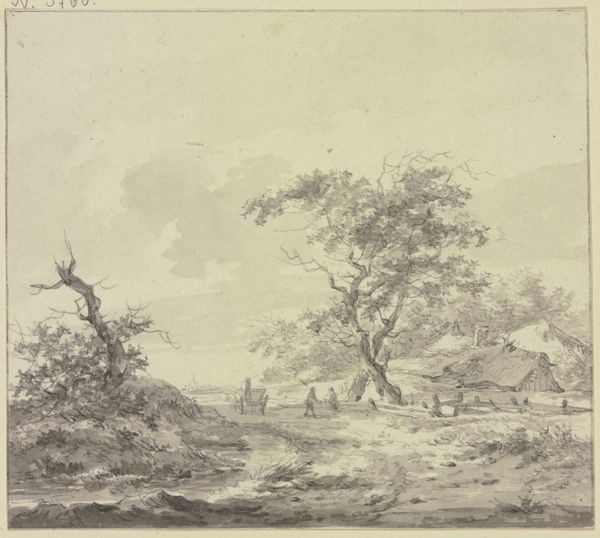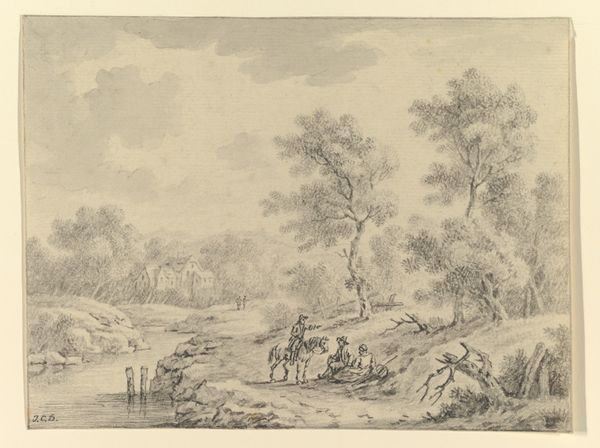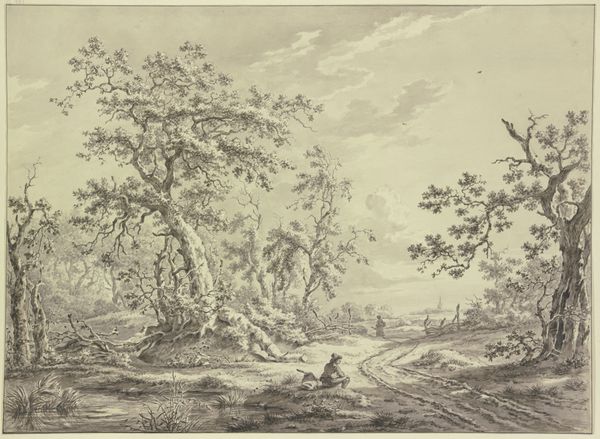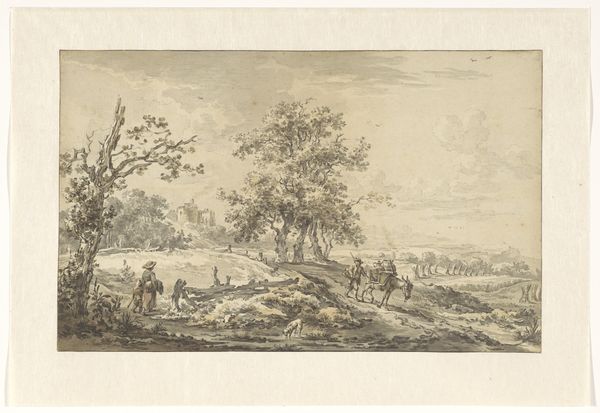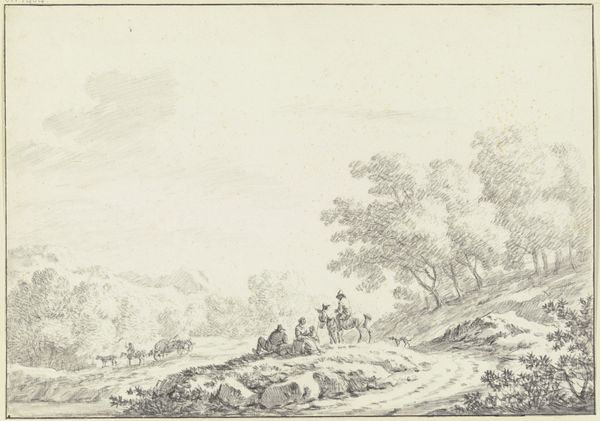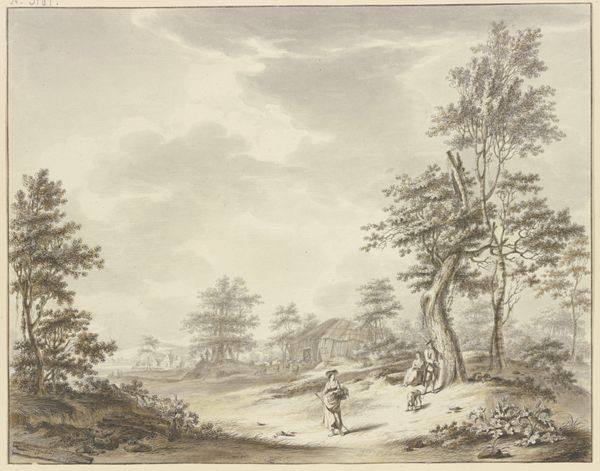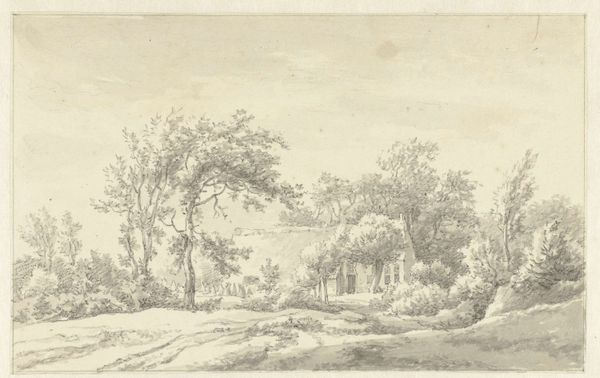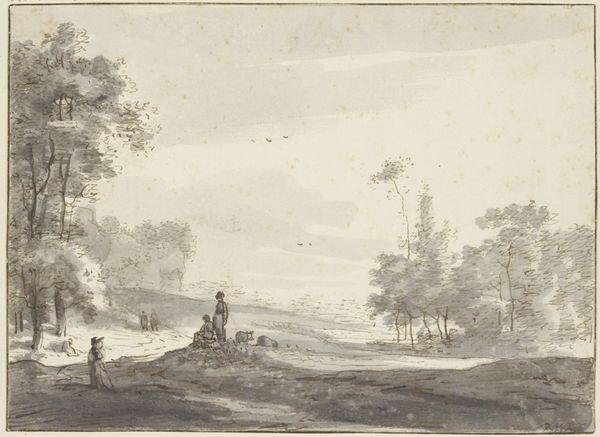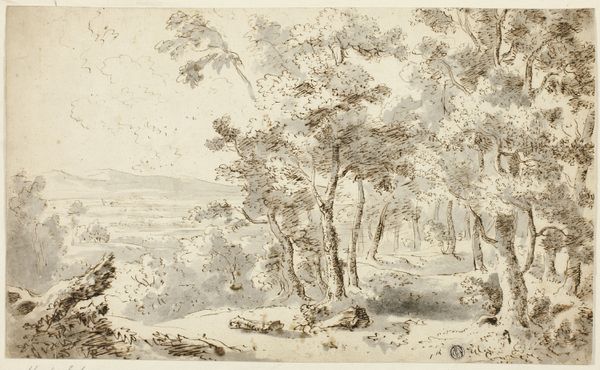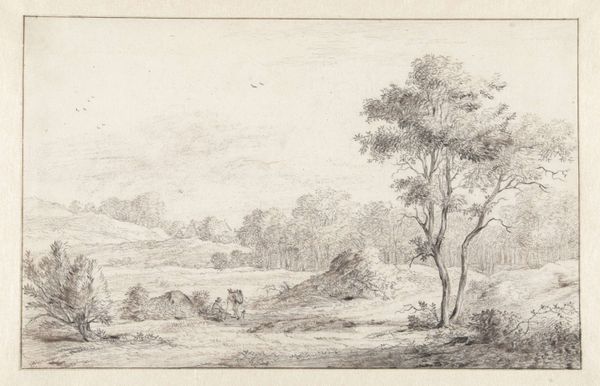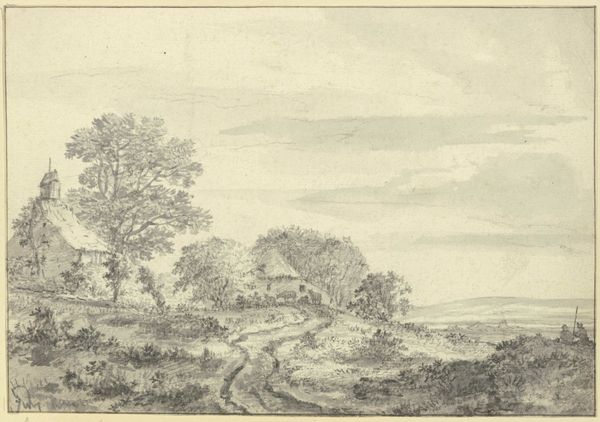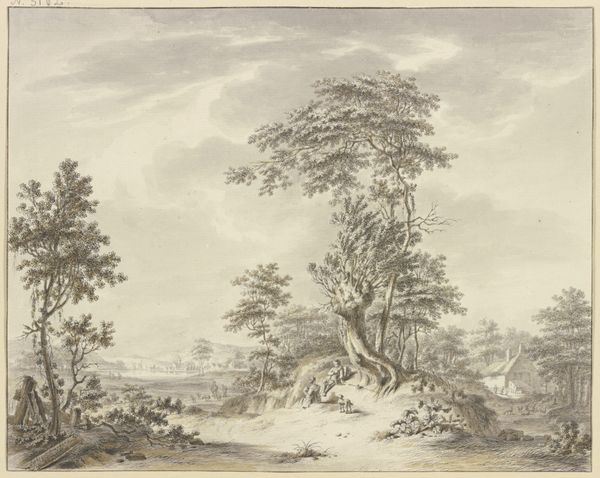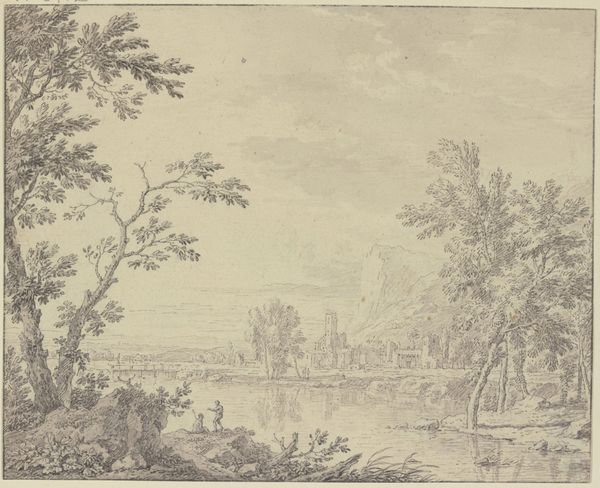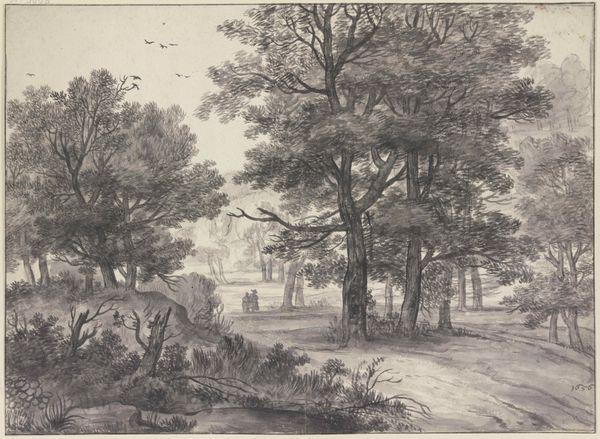
Eine Gegend mit Gebüsch, in der Mitte ein Weg, der an einer Baumpartie vorbei nach einer Burg sich zieht
0:00
0:00
drawing, plein-air, paper, ink, chalk
#
drawing
#
plein-air
#
landscape
#
paper
#
ink
#
romanticism
#
chalk
#
15_18th-century
Copyright: Public Domain
Curator: This subtle landscape, entitled "Eine Gegend mit Gebüsch, in der Mitte ein Weg, der an einer Baumpartie vorbei nach einer Burg sich zieht", rendered in ink and chalk on paper, might be a product of Egbert van Drielst's plein-air practice. It presents a pathway receding toward a distant castle. What catches your eye about this work? Editor: There’s a melancholy stillness. The muted palette, the solitary figure on the path, and the broken tree in the foreground—they all seem to hint at themes of impermanence and a kind of sublime loneliness. Curator: That isolated figure really anchors the vastness of nature, which certainly evokes Romantic ideals. The pathway and the castle hold great symbolic value. Roads often represent journeys, both literal and metaphorical, while castles frequently signify power structures or idealized pasts. Their arrangement leads one's gaze--and perhaps the soul--toward distant authority. Editor: And, possibly, oppression? It’s easy to get caught up in Romanticism’s fascination with the sublime, but sometimes these structures of power represented very real suffering for people. I can't help thinking about who built the castle, and at what cost. Is this landscape a subtle critique, cloaked in an aesthetically pleasing image? Curator: That's a fascinating point to consider. While the symbolism isn't overt, it could reflect subconscious tensions related to social hierarchies and their legacies. It's equally possible, given plein-air as a technique and philosophy, that van Drielst simply aimed to capture a truthful image, albeit rendered through a romantic lens. Even this objective rendering, though, carries inherent ideological biases, no? Editor: Precisely. Art never truly exists in a vacuum. Whether intentional or not, the artist is responding to their social reality. And in this image, even in its seeming tranquility, those traces of history—and potential inequity—are quietly visible. It also raises an issue of accessibility since one wonders whether the castle offered a public space accessible to everyone or excluded certain segments of society. Curator: I agree. It is valuable to explore these kinds of complex layers. This journey, punctuated by the distant, powerful symbol of authority and bounded on its pathway by elements of the natural world is one which contains much history within it. Editor: Yes, seeing art as an ongoing conversation, shaped by both historical realities and individual experience… it enriches our perspective.
Comments
No comments
Be the first to comment and join the conversation on the ultimate creative platform.
